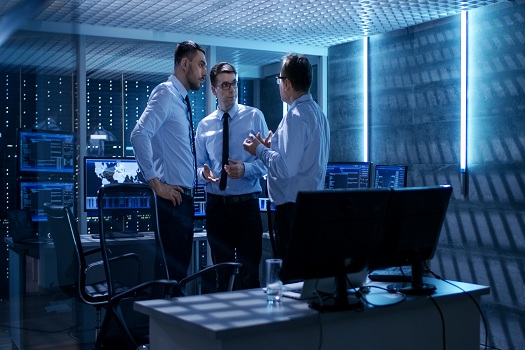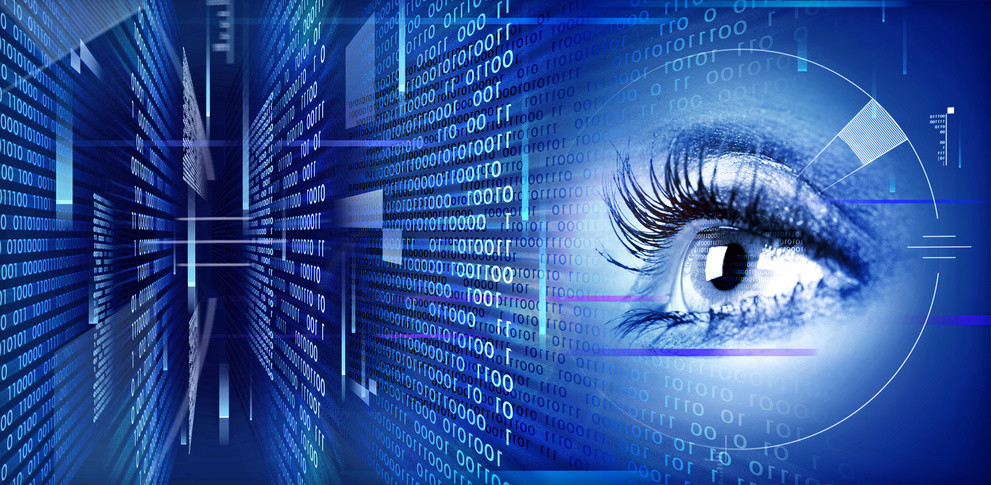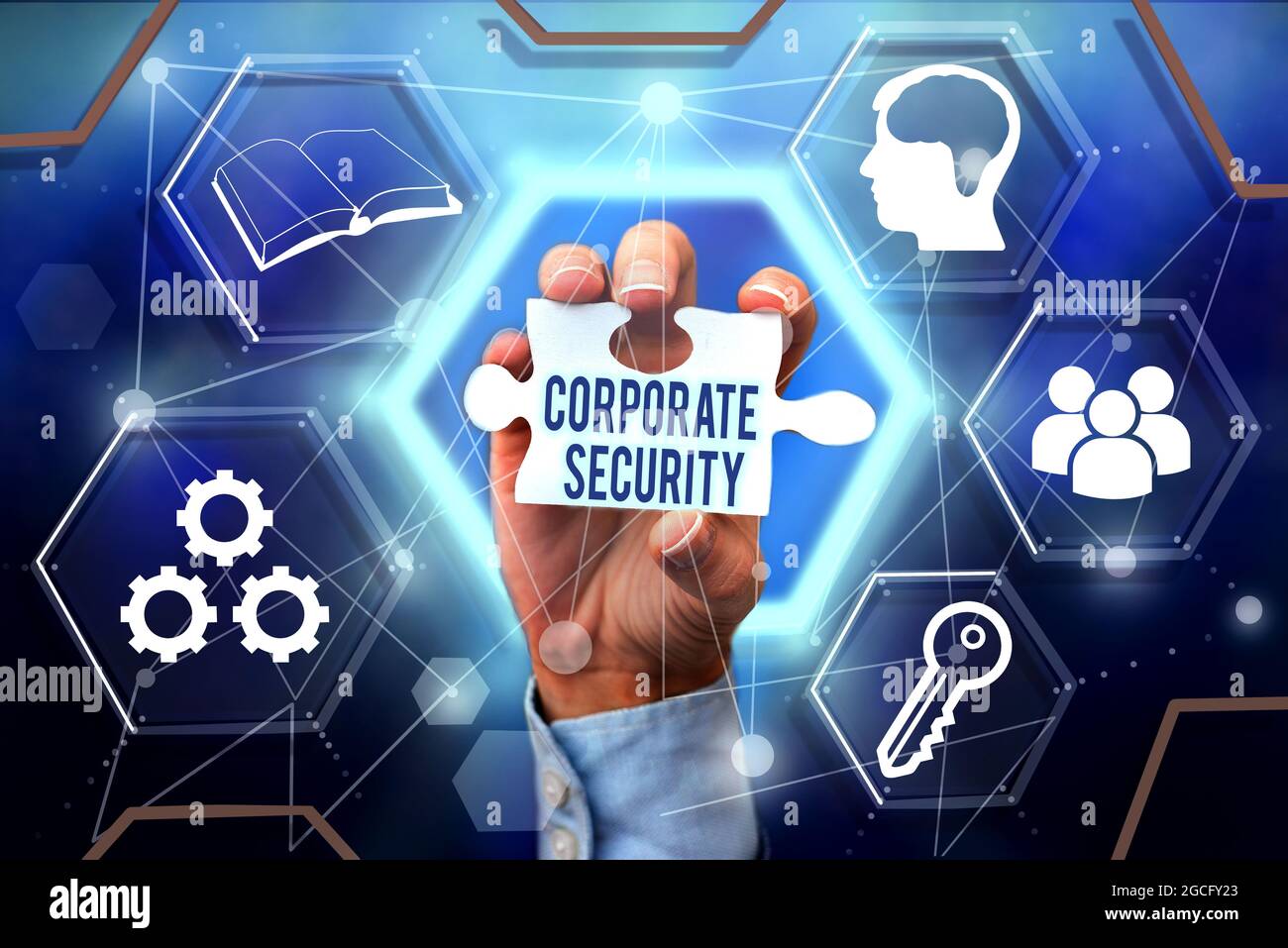Corporate Security Demystified: Enhancing Your Company Defenses
Wiki Article
From Cybersecurity to Physical Actions: Enhancing Corporate Protection in a Changing Globe
By integrating the staminas of both cybersecurity and physical security, business can produce a thorough defense method that attends to the varied variety of threats they face. In this discussion, we will certainly check out the transforming threat landscape, the demand to incorporate cybersecurity and physical protection, the implementation of multi-factor verification measures, the relevance of staff member understanding and training, and the adaptation of safety procedures for remote workforces. By examining these crucial areas, we will obtain useful understandings into exactly how companies can strengthen their business safety and security in an ever-changing world.Understanding the Changing Danger Landscape
The advancing nature of the modern globe requires a thorough understanding of the altering threat landscape for effective company protection. In today's electronic and interconnected age, threats to company safety and security have come to be a lot more intricate and sophisticated. As technology breakthroughs and services end up being significantly reliant on electronic infrastructure, the potential for cyberattacks, data breaches, and other safety breaches has substantially increased. It is vital for organizations to stay informed and adjust their safety and security measures to deal with these progressing hazards.One trick facet of understanding the transforming danger landscape is identifying the different kinds of hazards that organizations encounter. In addition, physical risks such as theft, vandalism, and corporate espionage stay prevalent issues for services.
Monitoring and assessing the risk landscape is essential in order to identify prospective threats and susceptabilities. This involves remaining upgraded on the most recent cybersecurity fads, assessing hazard knowledge reports, and carrying out regular threat evaluations. By understanding the altering danger landscape, organizations can proactively execute suitable security procedures to mitigate threats and secure their possessions, reputation, and stakeholders.
Integrating Cybersecurity and Physical Protection
Incorporating cybersecurity and physical safety is crucial for extensive corporate security in today's electronic and interconnected landscape. As companies progressively rely upon modern technology and interconnected systems, the boundaries in between physical and cyber threats are becoming blurred. To effectively safeguard against these threats, a holistic technique that combines both cybersecurity and physical safety and security procedures is important.Cybersecurity focuses on safeguarding electronic properties, such as systems, information, and networks, from unapproved gain access to, disruption, and theft. Physical protection, on the various other hand, incorporates procedures to secure physical assets, individuals, and facilities from susceptabilities and threats. By integrating these 2 domain names, organizations can address susceptabilities and dangers from both electronic and physical angles, consequently improving their overall safety and security pose.
The assimilation of these two disciplines permits for an extra comprehensive understanding of security risks and enables a unified reaction to events. For instance, physical access controls can be enhanced by integrating them with cybersecurity procedures, such as two-factor authentication or biometric recognition. Cybersecurity measures can be matched by physical security measures, such as security cameras, alarm systems, and safe and secure gain access to points.

Implementing Multi-Factor Verification Actions
As organizations significantly prioritize comprehensive protection measures, one reliable technique is the execution of multi-factor authentication actions. Multi-factor authentication (MFA) is a security approach that requires users to give multiple types of identification to access a system or application. This method includes an added layer of protection by integrating something the user understands, such as a password, with something they have, like a safety and security or a fingerprint token.By applying MFA, companies can significantly enhance their safety stance - corporate security. Traditional password-based authentication has its restrictions, as passwords can be quickly endangered or neglected. MFA minimizes these threats by adding an additional authentication factor, making it harder for unauthorized individuals to access to sensitive information
There are several kinds of multi-factor authentication techniques readily available, including biometric verification, SMS-based confirmation codes, and equipment tokens. Organizations need to evaluate their particular requirements and choose one of the most ideal MFA remedy for their demands.
Nonetheless, the application of MFA ought to be thoroughly planned and performed. It is essential to strike a balance in between security and usability to avoid customer disappointment and resistance. Organizations must additionally take into consideration potential compatibility issues and provide sufficient training and support to guarantee a smooth transition.
Enhancing Staff Member Understanding and Training
To reinforce company safety, organizations should prioritize enhancing employee recognition and training. Several safety and security violations happen due to human mistake or absence of awareness.Effective worker understanding and training programs need to cover a wide variety of subjects, including data security, phishing assaults, social engineering, password hygiene, and physical safety measures. These programs ought to be tailored to the particular requirements and More hints obligations of various worker functions within the company. Routine training sessions, simulations, and workshops can aid employees create the essential abilities and expertise to recognize and react to safety and security risks successfully.
In addition, companies ought to urge a society of safety awareness and give continuous updates and pointers to maintain workers informed concerning the most up to date threats and reduction strategies. This can be done through inner interaction networks, such as e-newsletters, intranet sites, and email projects. By fostering a security-conscious labor force, companies can substantially minimize the likelihood of security cases and safeguard their valuable possessions from unauthorized gain access to or concession.

Adapting Safety And Security Actions for Remote Workforce
Adapting business protection measures to accommodate a remote workforce is necessary in ensuring the protection of sensitive info and possessions (corporate security). With the raising fad of remote work, organizations should carry out proper protection actions to mitigate the risks related to this brand-new method of functioningOne critical aspect of adapting protection measures for remote work is establishing secure interaction networks. Encrypted messaging platforms and digital private networks (VPNs) can assist safeguard sensitive info and avoid unapproved access. Furthermore, organizations should enforce using strong passwords and multi-factor authentication to enhance the protection of remote gain access to.
An additional crucial factor to consider is the implementation of protected remote access solutions. This entails offering employees with secure access to company sources and data with online desktop computer framework (VDI), remote desktop computer methods (RDP), or cloud-based services. These modern technologies guarantee that sensitive info stays secured while making it possible for employees to execute their roles efficiently.

Lastly, extensive protection recognition training is crucial for remote staff members. Educating sessions ought to cover best techniques for securely accessing and handling delicate info, determining and reporting phishing attempts, and keeping the overall cybersecurity health.
Conclusion
In conclusion, as the danger landscape continues to evolve, it is important for companies to reinforce their safety gauges both in the cyber and physical domains. Integrating cybersecurity and physical safety, applying multi-factor verification actions, and improving worker recognition and training are vital actions towards achieving durable business safety.In this discussion, useful source we will check you can look here out the changing hazard landscape, the demand to incorporate cybersecurity and physical safety, the execution of multi-factor authentication measures, the relevance of worker recognition and training, and the adjustment of safety and security measures for remote labor forces. Cybersecurity measures can be matched by physical safety steps, such as security video cameras, alarm systems, and protected accessibility factors.
As companies progressively focus on comprehensive safety procedures, one effective technique is the implementation of multi-factor authentication actions.In conclusion, as the threat landscape continues to progress, it is essential for companies to reinforce their safety and security gauges both in the cyber and physical domains. Integrating cybersecurity and physical safety, applying multi-factor authentication procedures, and enhancing staff member understanding and training are vital actions in the direction of attaining durable company security.
Report this wiki page